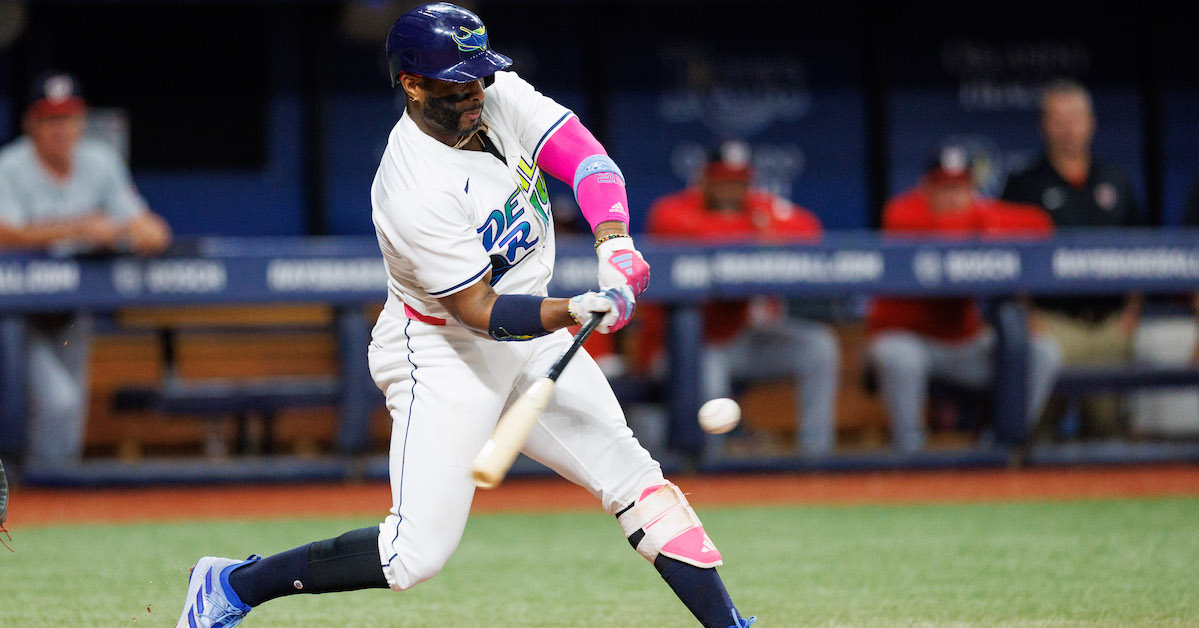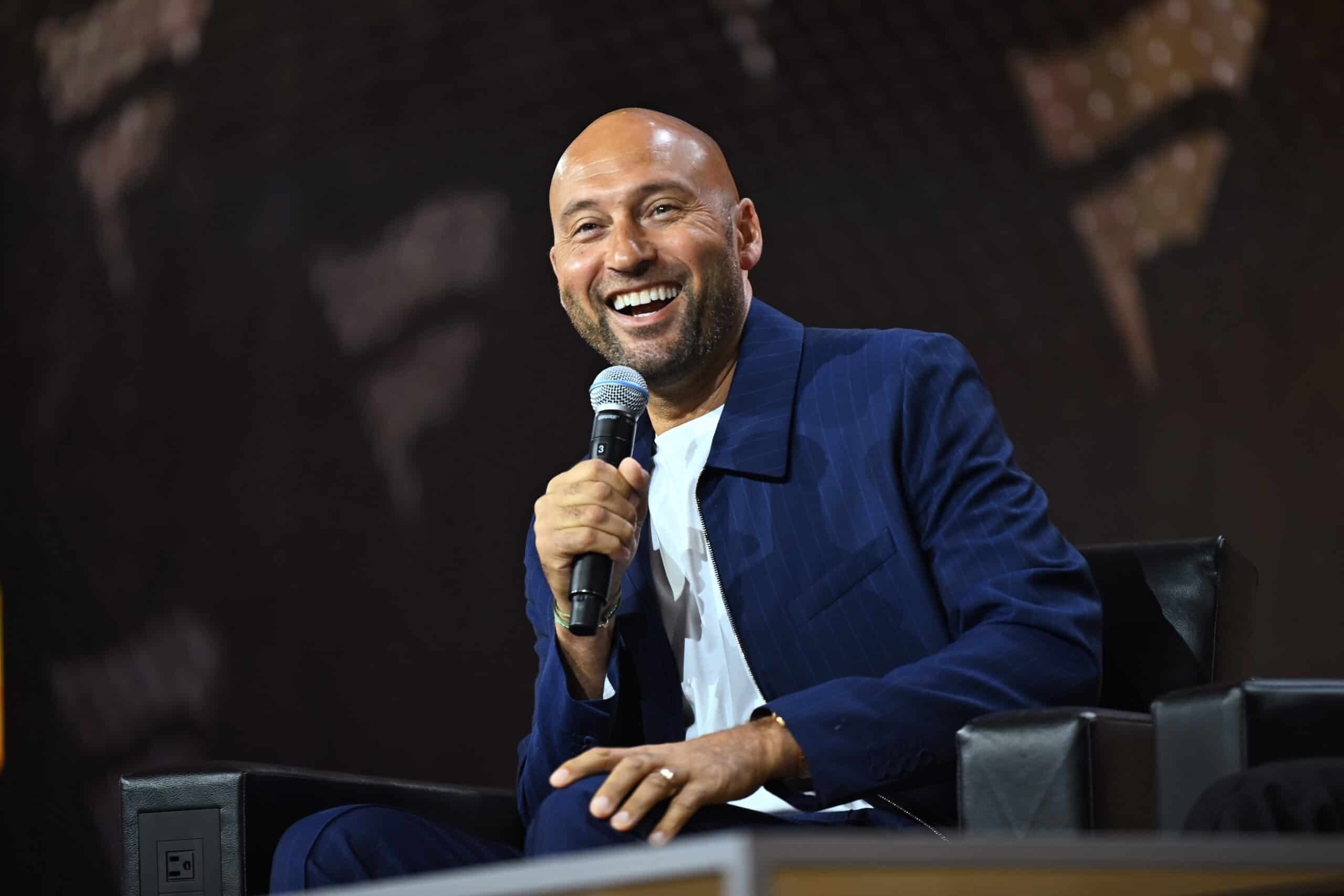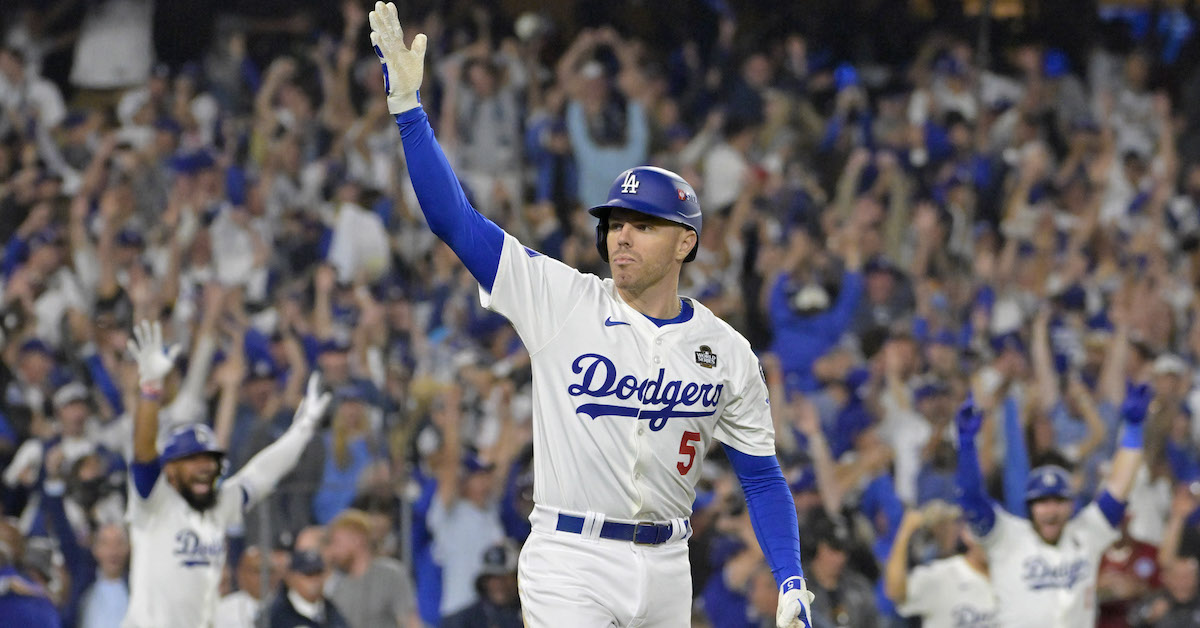[ad_1]

This is a bounce-back season for Yandy Díaz, and not in a good way. After two straight seasons with a wRC+ above 145, the Rays first baseman is at 106 so far in 2024. When Jay Jaffe checked in on him on June 13, Díaz had just climbed out of a hole. Through May 10, Díaz was running a wRC+ of just 77 with a 90.9 mph average exit velocity. Since that date, he’s been at 128, and his exit velocity has jumped all the way to 93.7 mph. Even more important, he was running a 60.3% groundball rate on May 10, but has run a 53.3% groundball rate after that point. For the season, that still leaves him at 56.4%, highest among all qualified players, but for Díaz, that handful of percentage points has always been the difference between being a good hitter and being one of the best in baseball. When his groundball rate is up, his wRC+ is down, and vice versa. The relationship is plain to see: MLB’s new bat tracking data put the issue in stark relief.
Blasts are a combination of two metrics: fast swings and squared up swings. The official definitions are here, but if you swing hard and you barrel the ball up, you’ll end up with a blast. That’s a good thing, because so far this season, blasts have a wOBA of .731, and a barrel rate of 27.7%. For Díaz, however, those numbers are .423 and 16.0%. He’s tied with Gunnar Henderson for fourth in baseball with 100 blasts, but just five of those blasts have turned into home runs. Of the 260 players who have hit at least 25 blasts this season, that 5.0% home run rate puts him in 248th place. Why? You know why. He has a launch angle of 1 on his blasts, tied for 259th out of 260.

On the left, with the infield dirt almost completely obscured by dots, is Díaz’s spray chart on blasts. On the right, with home runs sprinkled liberally on top, is Henderson’s. When it comes to blasts on the ground, Díaz is out in first place with a healthy lead. Sixty of hits blasts have been groundballs. Henderson is in second with 48. Just as important, Díaz gets even less production than you’d expect out of those balls because he really buries them in the ground. He has a -11 launch angle on those groundball blasts. Of the 84 players who have hit at least 20 groundball blasts, that’s the absolute lowest. As a result, Díaz’s .207 wOBA on groundball blasts is way below the league average of .377.
While these numbers are new and fascinating, I would guess that I haven’t yet told you anything that you couldn’t have intuited for yourself: Díaz hits the ball hard, and when he can lift it he’s great, but that doesn’t happen all that often. From this point on, I’m going to leave his launch angle issues behind, because the bat tracking numbers show us something that’s even more interesting. I’m not as certain how to interpret it, but I think it’s worth sharing all the same. Among qualified players, Díaz’s 18.6% blast-per-swing rate is tied for fifth. Here’s the top 10 in blasts per swing among qualified batters, but take a look at the column on the right. That’s fast swing rate, the percentage of swings where the bat speed reaches 75 mph. One of these things is not like the others.

There’s Díaz’s at no. five, but look at his fast swing rate compared to everybody else’s. It’s miles behind theirs. Only two people are within 20 percentage points of Díaz! Here’s what that looks like in a scatter plot. Díaz swings hard quite often if you compare him to the league as a whole, but for someone who crushes the ball as often as he does, his fast swing rate is positively miniscule.
Let’s go back to our top 10 list and add another column, blasts-per-fast-swing rate. We’re just dividing the first column by the second column, but now it shows us how often batters square up the ball when they swing hard. I don’t think the data behind these numbers are perfect, but they’re definitely good enough to give us an impression of what’s going on.

Except for Díaz and Stanton, all the batters here square up their fast swings roughly a third of the time. Stanton, who is constitutionally incapable of swinging at anything less than hyper speed, is at 19.3%. Díaz is at 58.5%. Quite simply, when Díaz swings hard, he doesn’t miss. That’s also true of him more generally. Among qualified players, his 12.4% whiff rate is second only to the one and only Luis Arraez. Díaz is even more of an outlier in this graph.
Knowing what we know about bat speed — that hard swings result in louder contact but more misses, while softer swings result in softer contact but a better chance of squaring the ball up — my first thought was that maybe Díaz has this whole thing figured out. When he sees a pitch that he can really crush, he swings out of his shoes, and when he doesn’t, he does his best Arraez impression, throttling down and finding a way to put the barrel on the ball. But that’s not what’s happening. Using the data from the bat tracking leaderboard, I went ahead and reverse engineered Díaz’s contact rate on swings that aren’t fast swings.
When Díaz swings hard, he squares up the ball 58.5% of the time, but on swings below 75 mph, he squares up the ball just 21.3% of the time. That’s not bad, but it’s only a little bit above average. Like I said earlier, I’m not positive of what’s going on. I definitely don’t think it’s a coincidence that Díaz is running a contact rate that’s a full 15 percentage points above his career rate in the same season that his exit velocity, hard-hit rate, fly ball rate, and pull rate have all taken a tumble.
Díaz has one of the most interesting skill sets in all of baseball. He’s capable of hitting the ball as hard as just about anyone in the game, while making contact more often than everyone except for literally Luis Arraez. That’s just not usually how things work. Any time he manages to direct that power somewhere other than the dirt in front of home plate, he’s one of the best hitters in the world. I wish we could compare all these bat tracking numbers to the ones he ran last season. It would be fascinating to see if he was still such an outlier in terms of fast swing rate while he was performing like a more traditional power hitter. For now, it’s just a fun fact, but hopefully we’ll learn more about the relationships between these skills once we have more than half a…
[ad_2]



